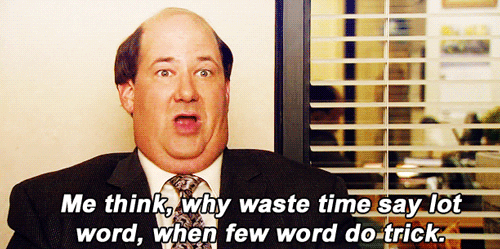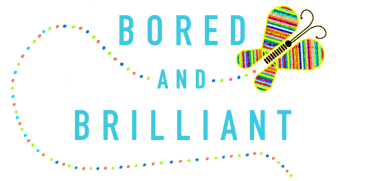
Distractions are the epitome of my life. I have always been a proud multitasker, but I’m starting to realize that this isn’t always a good thing. Many of the environments that we work and live in each day don’t provide the structure to be a single-tasker. We utilize computers and networks that have instant messaging, email, and other “productivity” tools that perpetuate the rabbit hole syndrome that defines distraction. As a parent, I feel that I get interrupted all the time on a task by a request for help or to answer a plethora of questions from my kids and even husband that pull me away from focusing on my “job”.
I am an avid audiobook listener. I find it easier to listen to an audiobook while I do yard work, working on a crossword puzzle, or when playing an addicting game on my phone. Is this considered multitasking? I feel things like audiobooks increase the ability of multitasking. How many people do you know that sit and do nothing else while listening to an audiobook? I’ve never read more books in the past few months due to this “productivity tool”. I have difficulties reading an actual book because I have to put all my attention into and not let anything interfere. As I type this, perhaps this is my problem. In my opinion, there are times when multitasking can be beneficial in a leisure environment. However, there is a difference in multitasking for work-related tasks.
This article lists ten reasons why single-tasking is beneficial.
 us getting distracted by something that gives us a more positive sensation, such as looking to see who liked our recent Instagram post or finding recipes for supper. He also adds to the idea previously discussed how our work environments are structured around multitasking. We get notifications instantly for emails, texts, social media, and how quickly we respond, no matter the urgency of the notification, determines how easily distracted we are, sometimes without even knowing it. He explains more about this research in this video about being “
us getting distracted by something that gives us a more positive sensation, such as looking to see who liked our recent Instagram post or finding recipes for supper. He also adds to the idea previously discussed how our work environments are structured around multitasking. We get notifications instantly for emails, texts, social media, and how quickly we respond, no matter the urgency of the notification, determines how easily distracted we are, sometimes without even knowing it. He explains more about this research in this video about being “ This Chrome extension allows you to block specific sites based on parameters you define so you can remain productive on a single task. There are different modes to select from that can have a password protection option applied to make it even more difficult to access unnecessary sites. It can be downloaded on your mobile device as well.
This Chrome extension allows you to block specific sites based on parameters you define so you can remain productive on a single task. There are different modes to select from that can have a password protection option applied to make it even more difficult to access unnecessary sites. It can be downloaded on your mobile device as well. This Chrome extension helps you stay focused by restricting the amount of time you can spend on time-wasting websites. Once your allotted time has been used up, the sites you have blocked will be inaccessible for the rest of the day.
This Chrome extension helps you stay focused by restricting the amount of time you can spend on time-wasting websites. Once your allotted time has been used up, the sites you have blocked will be inaccessible for the rest of the day. goes on and on. Sure these options may make the presentation look great, but perhaps those moving parts on the screen are a
goes on and on. Sure these options may make the presentation look great, but perhaps those moving parts on the screen are a 
I would have to agree that it does make us less productive during the day! I chuckled when I read about the teacher with the cat-eared headband. I wear a hat when I conference with kids and the kids are NOT allowed to interrupt unless they are barfing or bleeding. This is sacred focused time with that group of students or that one particular student and we are all worthy of one on one attention to improve and set goals. One other thing I have started to do is actually eat my lunch at school without doing a million other tasks– to actually enjoy my lunch and conversation with students. Once my lunch is finished, then I can do other things. Thanks for your reflections! Just wondering if you’re using all those chrome extensions, I found that interesting!
LikeLike
Thanks for the connection! I love the part about the cat ears! Such a great visual for kids to see that the teacher is off limits! I wonder if this would work at home with a husband and toddler too?
LikeLike
Thanks for a great read! I like the quote you included from Nir Eyal about how time management is pain management. I could not agree more and something I need to work more at! I like all the extensions you discussed as easy to limit distractions while working on the computer. Very helpful!
LikeLike
Pingback: Presentation Tools, Productivity Suits and the Question of Multitasking – Alyssa Mckenzie's Blog
Great post Daina. I think there is a running theme amongst these blogs … is becoming a ‘hyper’ multi-tasker an occupational hazzard for educators? It’s true that most of us are always ‘on’ and make a copious amount of decisions (big and small) through out the school day … then life also gets in the way (one reason I really hate when people say we get too many holidays and summers ‘off’). Thanks for the insight on procrastination (the struggle is real :-). Thanks for the tips and suggestions (I’ll try them … later ;-))
LikeLike